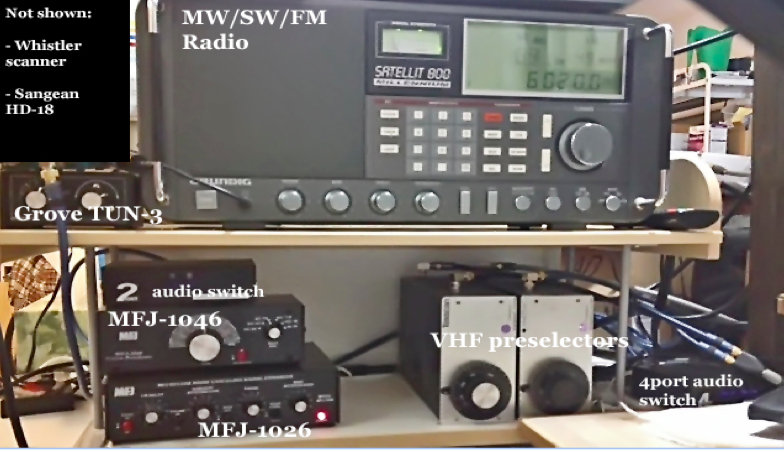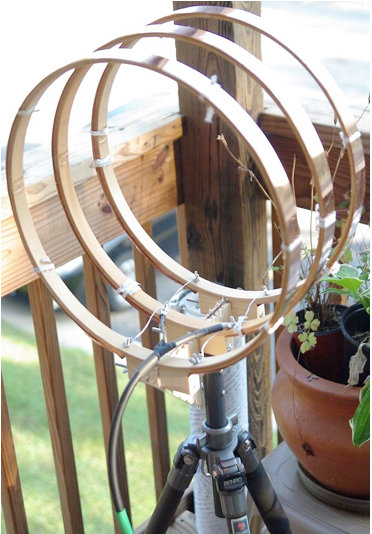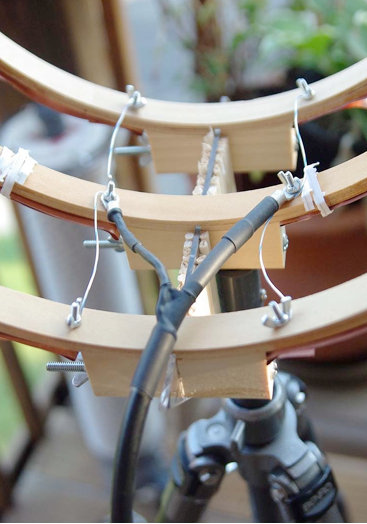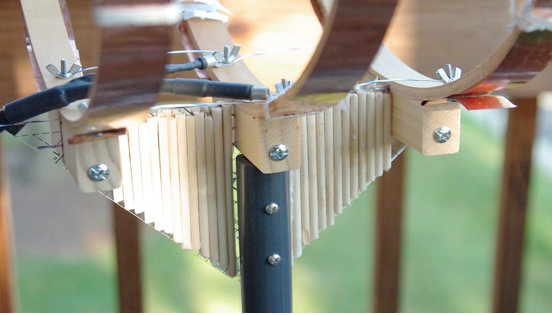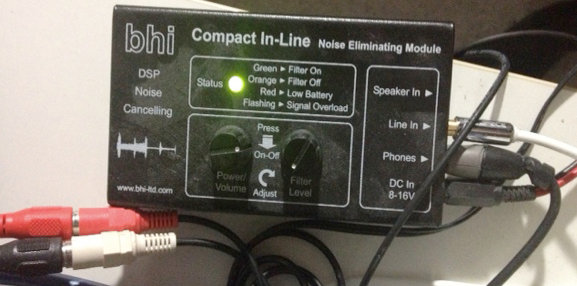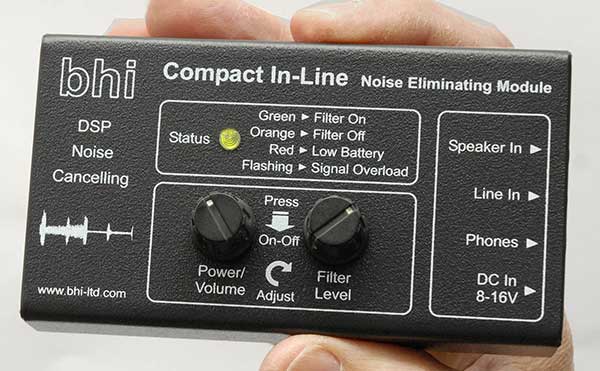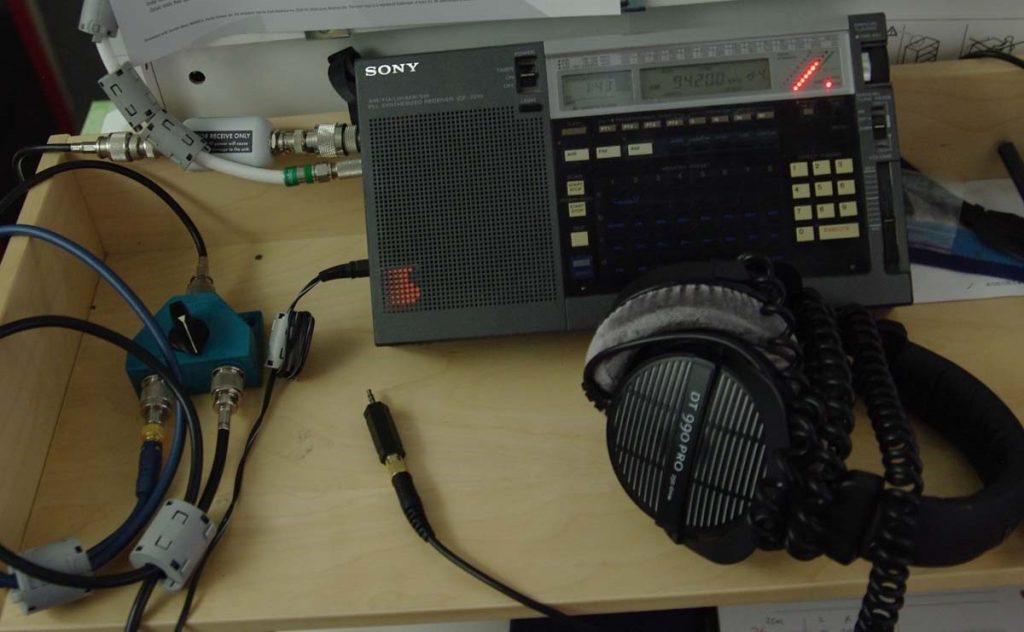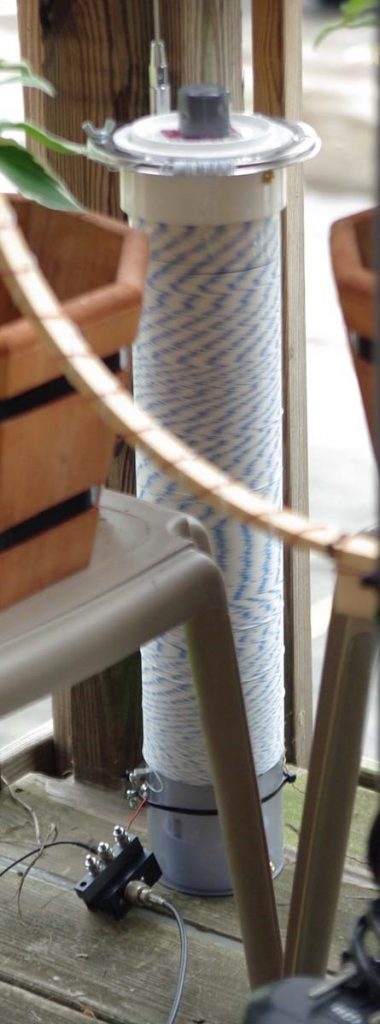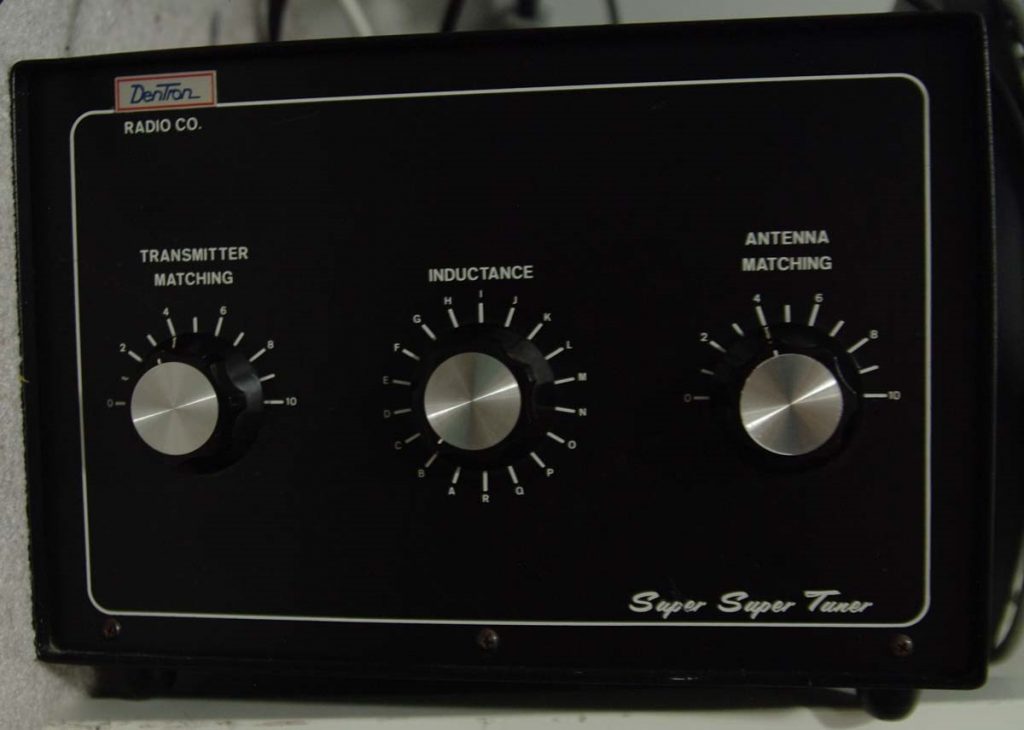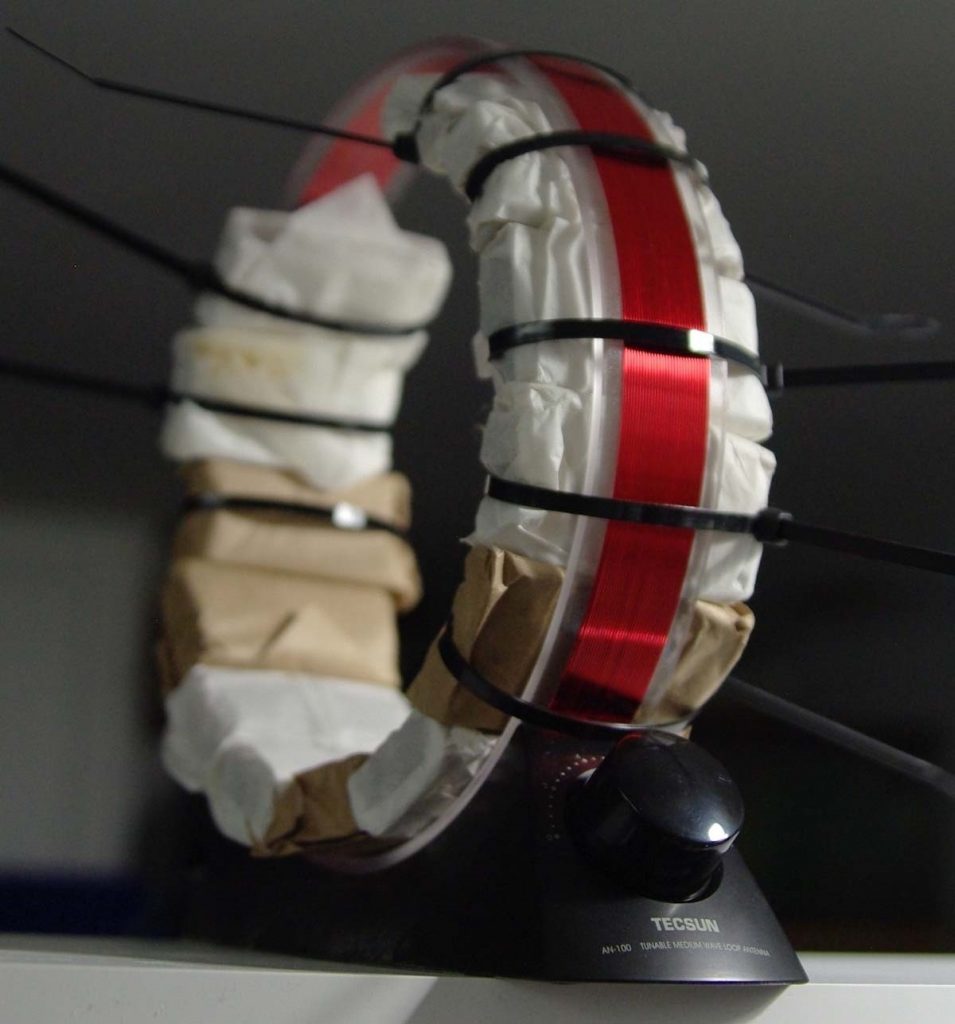Many thanks to SWLing Post contributor, TomL, for the following guest post:
“Car Shack” radio listening
by TomL
My car is an unusual place to listen to shortwave radio but has interesting possibilities. Due to the obscene noise at my home QTH, I decided that I must try something away from this unfortunate situation. So I took my homemade 14-inch loop antenna and outfitted the appropriate ancillary equipment with DC power packs. My trusty Sony ICF-2010 is the radio “vehicle” to “drive” this experiment (LOL). And, seriously, this is a way to show the public that it is not that hard to have a portable radio listening setup. Believe me, if I can do this, anyone can!
The basic ingredients are pictured here with some variations (see text):
- Homemade 14-inch Loop antenna + EF-SWL balun mounted backwards
- Wellbrook amplifier powered by DC power pack of 10 eneloop AA batteries
- KIWA Broadcast band (mediumwave) inline filter
- Palstar preselector (active antenna) plugged into car cigarette lighter
- Sony 2010 connected to a second DC power pack
- Sony ICD PX333 digital recorder
- Sennheiser earbuds
- 7 inch Samsung tablet and 4G MiFi device to do internet schedule lookups
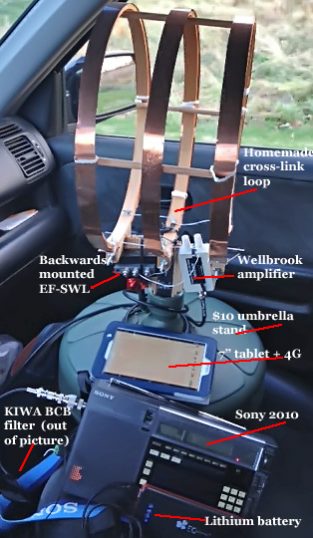
Illustration SEQ “Illustration” 1: Car Shack in operation.
An important finding was that anything that has a cheap IC circuit to regulate and/or convert DC power can be extremely noisy! The pictured 16000 maH lithium brick would initially be quiet but after a while it would start spewing noise all over the bands. Power cycling it sometimes helped but I decided that it is too unpredictable. Also, converter cables that convert 5V to 12V for devices needing 12V also produce overwhelming amounts of noise. Even a small 5V USB converter plugged into the cigarette lighter makes a modest amount of ubiquitous noise. I am ditching the lithium power pack and converter cables and any cigarette lighter adapters!
So, the main radio power pack will use the internal Sony battery comparment consisting of nine 2700 maH NiMH AA’s inside three D-cell battery holders that can each hold 3 AA batteries in parallel. This boosts the capacity to around 8100 maH for a modest cost (I already have NiMH chargers and the 4.5V requirement is not too high for the batteries in question). Pictured are examples of a single D-cell AA holder of which I bought 12 and the silver-top Powerex 2700 maH AA’s from fleaBay. The total voltage is slightly low (3.6V) but the Sony 2010 still works at a slightly lower performance (received signals are slightly weaker). I run the Sony on Local sensitivity and crank up the Palstar active antenna to compensate.
In a further quest for clean, portable DC power without noisy IC chips, I have been researching lithium batteries and it is quite a large amount of work to sift through all the variables. The Palstar active antenna and the Wellbrook amplifier both use external connections of 12V, 2.1mm (+ tip) plugs. NiMH is not going to cut it, too many needed and getting too heavy. Amongst the variables are things like:
- Using a proper charger and not leaving it unattended or it could burn down your house
- Chinese fakes being sold by the zillions that look exactly like the real thing
- Initial cost being higher than current NiMH
- Avoiding 1.5V step down batteries with noisy step down converter built-in
- Learning the new terminology for sizes: AA = 14500 = 14mm diameter & 50mm length
- Learning the differences between type of lithium: Lithium, Li-ion, LiFePo4, IMR, etc.
- The difference between protected vs. non-protected batteries
- How to avoid discharging the batteries too much which could render them completely useless (not just usage but also NON-usage as well)
- How to physically handle Lithium batteries to avoid shock and temperature extremes
- Learning how to compare maH’s of lithium to NiMH batteries
- Finding out that most top rated 14500 Li-ion batteries are too long to fit into AA battery holders without risking damage to the protection PCB mounted at the bottom of the battery
- and the list goes on and on…..
Here are some of the web pages I read to try to understand this technology:
- Is-the-AW-18650-battery-worth-the-price
- LiIon-18650-battery-comparison
- Buy 2 KeepPower 14500 and dont fit in!
- https://en.wikipedia.org/wiki/List_of_battery_sizes
- Disassembly-of-some-UltraFire-batteries
- Test-Review-of-Xtar-14500-800mAh-(Black)
- http://lygte-info.dk/review/batteries2012/CommonSmallIndividualTest UK.html
So, to cut to the chase, I have decided to order this one from XTARDirect because:
- I can order from a USA distributor who orders from the factory in Shenzen China
- The price is very reasonable for “protected” lithium ion batteries
- They actually should fit into typical AA battery holders without damaging it
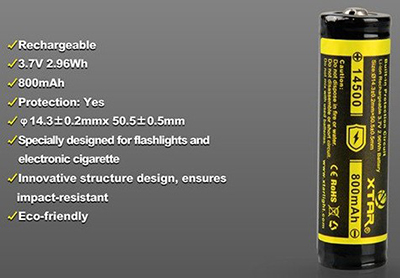
Illustration SEQ “Illustration” 2 XTAR 14500 800 maH Li-ion
They are not the highest rated in terms of capacity, load drain, amp surge ability, etc., but they seem to have enough positive statements from users that indicate it gets the job done. Since I don’t have the lithiums yet, I am using some temporary 10-cell AA holders with good old Eneloops – good enough for now. And I am buying this discontinued charger at a discount to recharge lithiums:
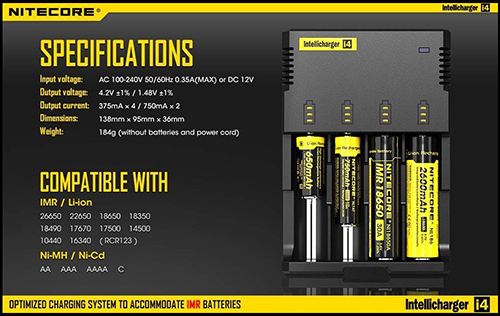
Illustration SEQ “Illustration” 3: Nitecore i4 original version
I will make two power packs made from these items pictured. The wire is fragile so I super glue the insulation directly to the DC power plug housing (avoiding getting any glue onto the bare wire inserted at the back). I will use three sets of lithiums (9 batteries) plus one set of Eneloop Pro’s (3 batteries) per power pack in the aforementioned parallel AA holders.
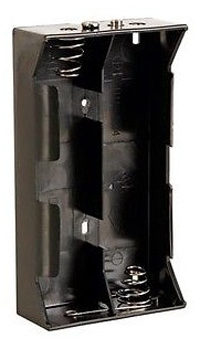
Illustration SEQ “Illustration” 4: 4X D-Cell battery holder.
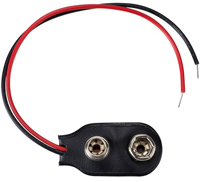
Illustration SEQ “Illustration” 5: “9V” Snap connector.
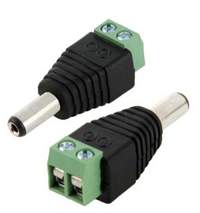
Illustration SEQ “Illustration” 6: 2.1mm x 5.5mm DC power plug.
Other items of note: The umbrella stand is optional since I found I like to move the antenna around and even tilt it to get slightly better directional signal. More importantly, I found that if I cut the Sony 2010 sensitivity from DX to Local, and then crank the Palstar preselector’s amplifier, I get a cleaner sound with less background noise. Also, the KIWA mediumwave filter is essential due to overloading.
One of my favorite stations is Radio Educacion (XEPPM) on 6185 kHz. A 1 kW station near the foot of Vulcan de Guadalupe in Mexico City, it is so weak that I almost never hear it and their wonderful selection of music representative of regional & cultural heritage. It is also 1675 miles distant according to Google Earth. Now, if I want to bother, I can go out and listen in my car at locations less noisy than home. So far, the safest places have been the parking deck at work (only two stories high) and the local grocery store parking lot. What I would really like is a very tall parking deck whose owners let me stay up on top long into the evening without harrassment (not sure I want to risk security personnel questioning me about the strange contraption and equipment – paranoia reigns these days)!
Sample of XEPPM, moderately good propagation from the work location:
Of course, the Brazilian station is booming next door at 6180 kHz (thank goodness for SSB-selectable Sync detectors):
Unexpected reception happens with this experiment. I mounted the antenna in the back, away from the engine and against the rear side window. Was traversing the local restaurant drive-through lane to get a hot dog, and turning the corner next to the long empty brick wall, the reception became dramatically stronger and clearer! Apparently, the brick wall blocked some interference as well as enhanced the signal coming from the Northeast. You can hear the effect starting at 25 seconds into the recording of RRI:
Also, not recorded from a previous evening at the grocery store location, 6135 kHz Radio Santa Cruz in central Bolivia, a 10 kW station playing Spanish rock music and a clear ID near the top of the hour.
More experiments to do, like
- Mount the antenna as high I as dare with PVC pipe (too cold out now and I would rather not open any windows but I am itching to mount the umbrella stand and antenna on a 3 foot PVC pipe on the roof of the car, the increase in received signal strength is significant)
- A bigger backpack to carry all this equipment away from the car
- If Elon Musk has his way and builds the Gigafactory (and competitors follow suit), there could be many more experiments with lithium type batteries in the future
- Perhaps get an SDR and cheap laptop computer to replace the Sony radio
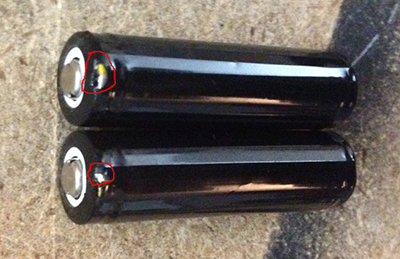 PS: I found out that the three-AA battery holders do not make contact at the (+) tip of the XTAR lithium batteries I purchased. I just gently lifted up the contact inside the battery holder to allow it to reach the battery tip, that’s all that is needed. Whatever you do, do not put an extra piece of metal inside the battery holders! I accidentally damaged the outside skin of two of the batteries with a common piece of copper metal and the batteries immediately started to get HOT. I took them out as soon as I could and the batteries cooled down. So, don’t use any extra metal surface inside the battery holders; lithium batteries do not tolerate any kind of short circuit!
PS: I found out that the three-AA battery holders do not make contact at the (+) tip of the XTAR lithium batteries I purchased. I just gently lifted up the contact inside the battery holder to allow it to reach the battery tip, that’s all that is needed. Whatever you do, do not put an extra piece of metal inside the battery holders! I accidentally damaged the outside skin of two of the batteries with a common piece of copper metal and the batteries immediately started to get HOT. I took them out as soon as I could and the batteries cooled down. So, don’t use any extra metal surface inside the battery holders; lithium batteries do not tolerate any kind of short circuit!
Cheers from Noizey Illinoiz,
TomL
Thank so much, Tom, for sharing your experiences and your ongoing experiments! Lately, I’ve been doing NPOTA activations with a portable loop antenna on top of my vehicle. I completely understand what you mean about getting strange looks from passers-by! We look forward to hearing about your future experiments fighting RFI.

